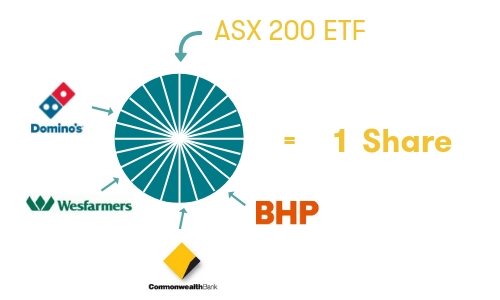Investment Terms You Should Know

If you’ve ever come across an investment term and scratched your head, you’re not alone.
Investing has its own jargon. We’ve broken down some of the common terms you may come across below alphabetically.
A – B
Annual Report: A report prepared by a company, usually intended to impress shareholders. It contains everything from cash-flow to management strategy.
AUM: The acronym for Assets Under Management: assets managed by a Money Manager, typically in a Managed Account.
Averaging Down: Averaging down refers to the process of purchasing more stocks as the price goes down – an investor may use this strategy if they believe the company is going to rebound and stock prices will rise again in the future.
Bear vs. Bull Market: A bear market is typically when the stock market is in a downward trend and stock prices are decreasing. The opposite is a bull market, in which stock prices rise and there is generally a positive outlook within the market.
Blue-Chip Stocks: The stocks behind large, industry-leading companies such as CSL, or the Australian big four banks.
Bonds: Bonds are similiar to stocks, but instead of purchasing a portion of the company and thus benefiting (or losing) based on their profit and performance, you are loaning money to an entity in exchange for regular fixed-rate interest payouts and the initial loan amount paid back after a set maturity date.
Broker: A person or company who buys and sells stocks for you in exchange for a fee/commission.
Related Article: 5-Star Rated Online Share Trading
D – G
Day Trading: The process of buying and selling stocks within the same trading day. This process is often, though not always, carried out by professional traders.
Dividends: Dividends are when a company makes a payment to its shareholders, typically as a distribution of its profits. This may be deposited into the shareholders bank account, or if the company has a dividend reinvestment plan they may issue further shares to shareholders.
Diversification: Diversification is a risk-management strategy that mixes a wide variety of investments within a portfolio, this could include different types of investments or diverse stock options. Diversification exists based on the belief that holding a wide variety of assets will have higher long-term yields and help an investor better handle unexpected downturns in any particular asset.
ETFs (Exchange Traded Funds): ETFs are a security that combines a selection of companies’ stocks, often tracking an index or sector. For example, an ETF may track the S&P/ASX20, or may track ASX200 Materials companies. Alternatively, ETFs may be actively managed by a money manager who selects the stocks that comprise the ETF. They are similiar to a managed fund but can be traded on the stock market.

GDP: GDP stands for Gross Domestic Product and refers to the monetary value of the finished goods and services of a country.
I – M
Index: An index measures a market or section of a market and is calculated from the prices of selected stocks. Eg. The ASX200, the S&P/ASX200 Health Care Index
Investment Horizon: Investment horizon simply refers to how long you plan to invest your money in a particular security or portfolio.
Investment Property: An investment property is most commonly a residential property bought with the intent to sell at a profit, or earn additional income through rent. Ideally, many investors aim for both.
Compare Investment Property Loans
The table below shows Investment Property Loans from companies based on a $350,000 loan amount, with Variable Interest and Principal + Interest Repayments.
Liquidity: The ease with which an asset or security can be quickly bought/sold at its intrinsic value on the marketplace aka. The ease of converting it into cash. For example, savings accounts are highly liquid. An investment property, on the other hand, has low liquidity.
Managed Funds: Managed funds are a type of investment which sees money pooled together from different investors into one fund that is invested and controlled by a professional investment manager.
Related Article: 7 Things To Consider When Choosing Managed Funds
Managed Accounts: An account owned by a single investor, managed by a professional Money Manager. Typically, these required larger investments but more recently, new technologies have allowed less high-net-worth investors to access Managed Accounts.
O – T
Options: Options are essentially contracts that give you the choice to buy or sell a particular security at a later date. This contract allows an investor to choose whether or not to go through with the transaction based on whether they think it is profitable.
Portfolio: A portfolio refers to the collection of assets that an investor holds, be it stocks, bonds, property or alternative investments.
Risk Tolerance: Your relationship with money and anxiety about it. Risk tolerance does not refer to an investors ability to avoid risks, but rather their emotional connection to seeing share prices rise/fall and how they respond to potential risks.
Shares: A share is a unit of ownership in a company, mutual fund, financial asset or trust. When you own a part of that company, you are entitled to a portion of the profit. This profit is paid out in dividends.
Term Deposit: Term deposits are cash investments held at financial institutions – your money is invested for an agreed interest rate over a fixed amount of time (or term). Term deposits are considered very low risk, and are offered by banks, building societies, credit unions and more.
Trading Platforms: A trading platform is the software a broker or financial institution uses to make trades online.
This is by no means an exhaustive list. You can always check in with Investor Hub or subscribe to our newsletter below.
Try our Investor Hub comparison tool to instantly compare Canstar expert rated options.







